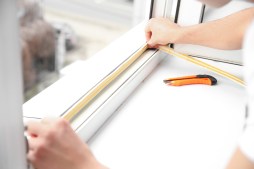Step-by-Step Guide to Assessing Whether to Regrout or Retile Your Bathroom Floor
Deciding whether to regrout or retile your bathroom floor can be a tough choice. Both options involve different levels of effort, cost, and impact on your bathroom’s appearance and durability. This guide will help you assess the condition of your bathroom floor and determine the best course of action for a fresh, long-lasting finish.
Understanding Grout and Tile: What Are Their Roles?
Before deciding on regrouting or retiling, it’s essential to understand what grout and tiles do. Tiles are the surface material that makes up your bathroom floor, providing protection against moisture and offering aesthetic appeal. Grout fills the spaces between tiles; it seals these gaps to prevent water from seeping underneath and adds structural stability to the tile layout.
Signs You Should Consider Regrouting
Regrouting is often a simpler solution when the tiles themselves remain in good condition but issues arise with the grout lines. Look out for cracked, crumbling, stained, or missing grout. If you notice discoloration due to mold or mildew that doesn’t respond well to cleaning, regrouting can restore both appearance and function without replacing tiles.
When Retiling Is Necessary
Retiling becomes necessary if the damage extends beyond just grout issues. For example, if tiles are cracked, chipped, loose, or warped due to water damage or wear over time, simply regrouting won’t solve these problems. Additionally, if you want to change your bathroom’s style completely or upgrade with newer tile materials for durability or design reasons, retile is the way to go.
Evaluating Cost and Effort for Each Option
Regrouting generally costs less than retile because it involves only removing old grout and applying new grout between existing tiles. It’s less labor-intensive but requires patience since improper application can lead to future leaks. Retiling requires removing all existing tiles which is more time-consuming and costly but ensures any underlying issues like subfloor damage are addressed during installation.
Making Your Decision: Step-by-Step Assessment
Start by inspecting both your grout lines and tile surfaces carefully in good lighting conditions. Test areas with mild cleaning solutions for mold removal first before deciding if replacement is needed. If grout problems dominate without tile damage — opt for regrouting first as an affordable fix. If multiple damaged tiles appear alongside worn-out grout — retile will give you a fresh start that lasts longer.
By following this step-by-step guide you can confidently decide whether regrouting or retiling your bathroom floor best suits your needs based on condition assessment rather than guesswork alone. Maintaining your floors not only protects against water damage but also keeps your bathroom looking inviting for years ahead.
This text was generated using a large language model, and select text has been reviewed and moderated for purposes such as readability.











